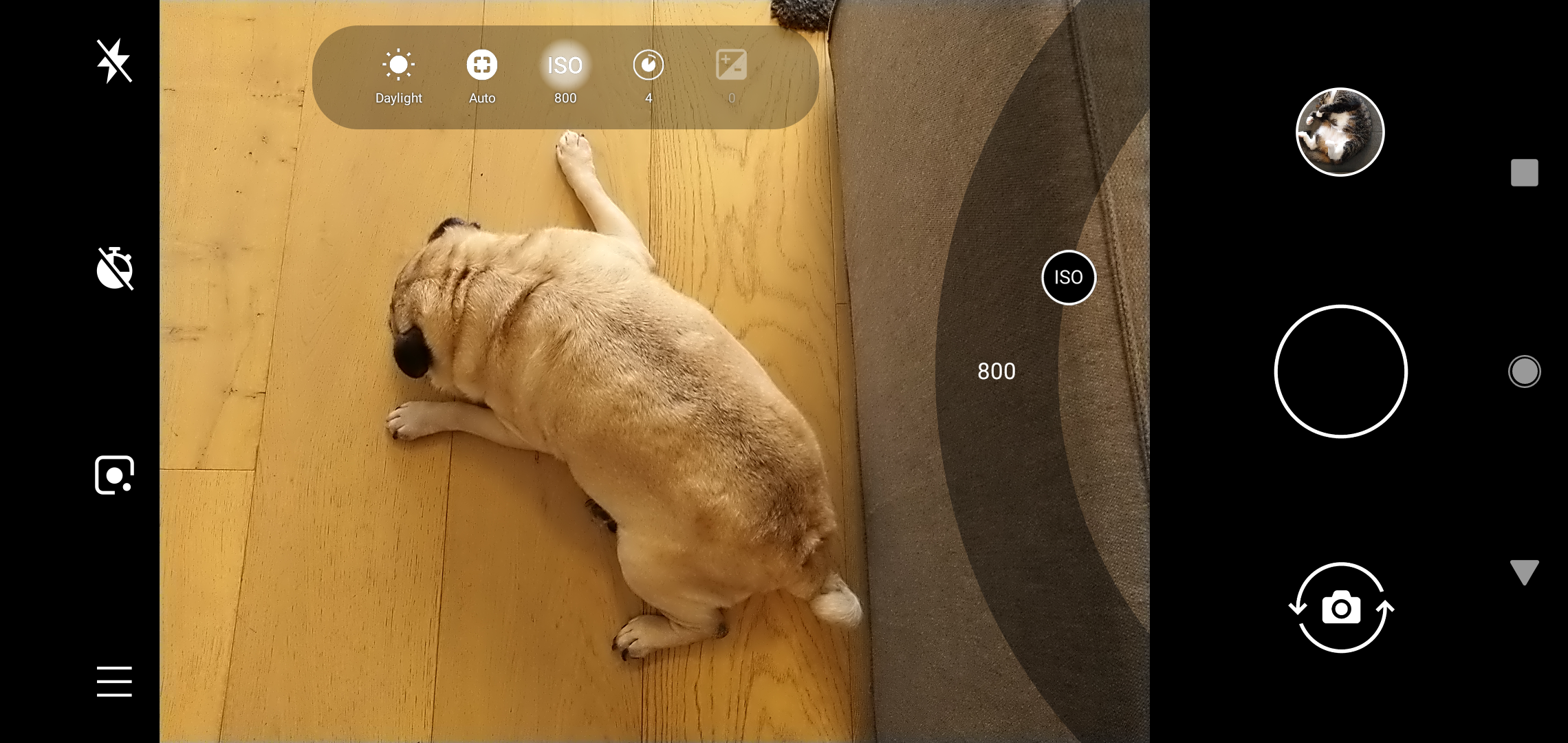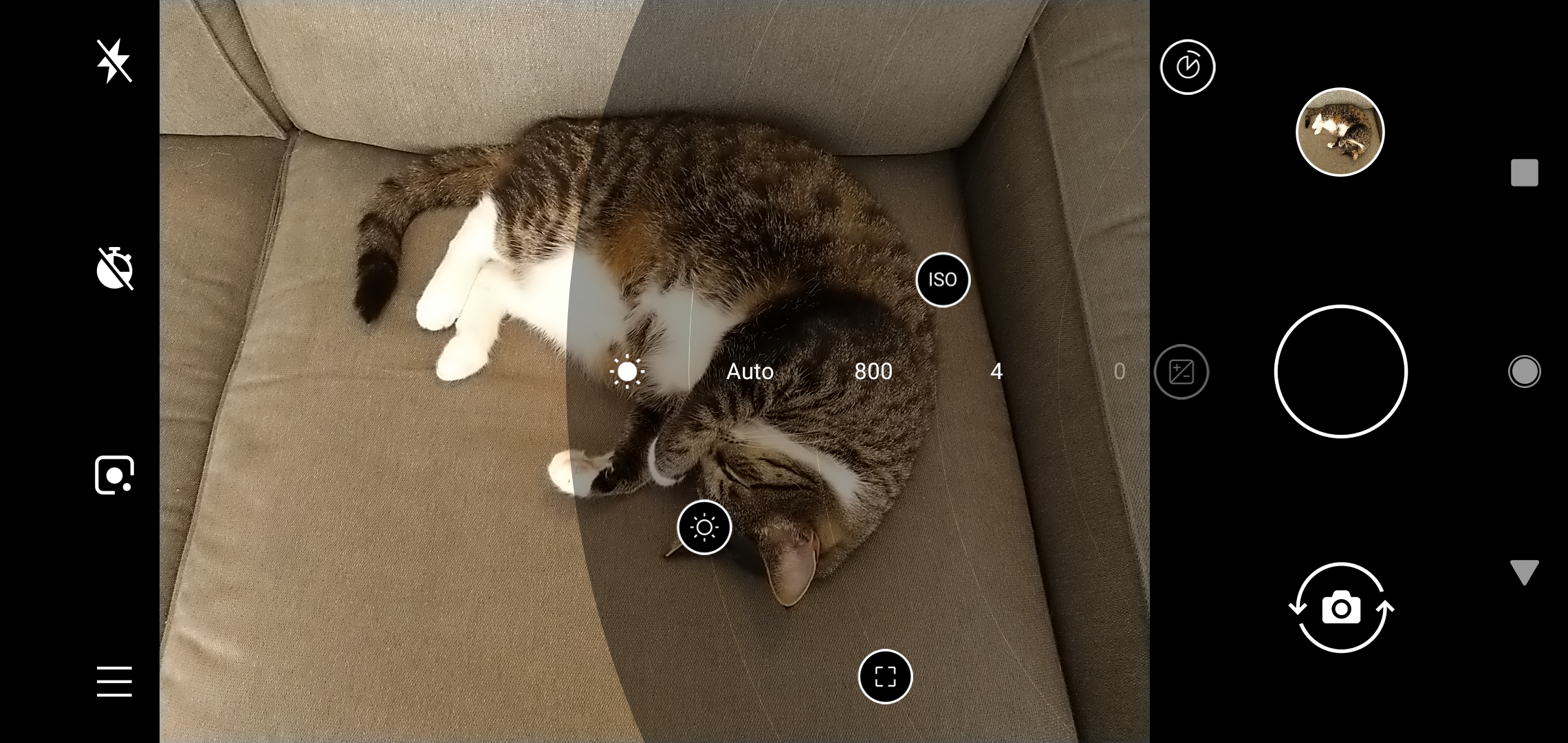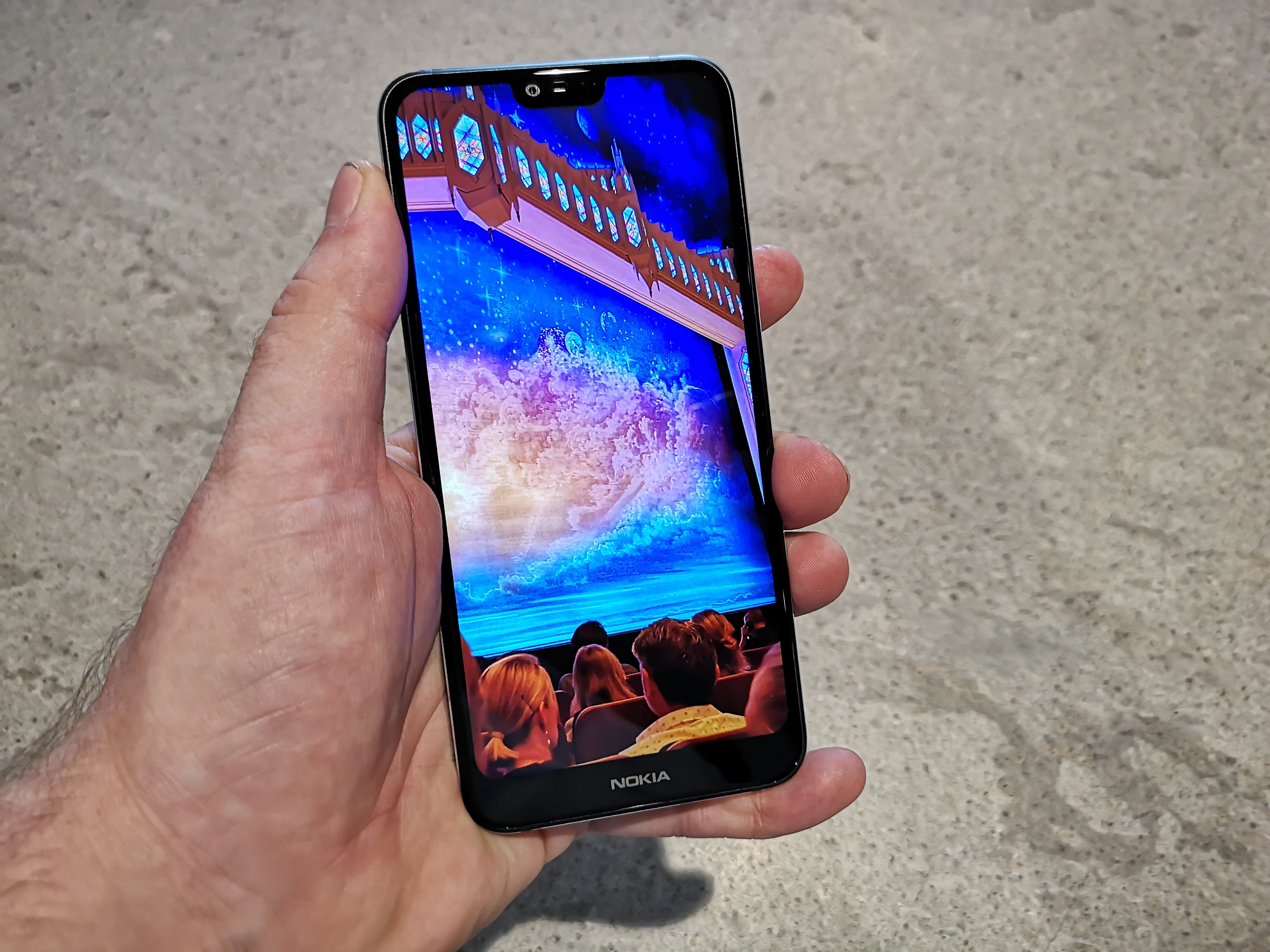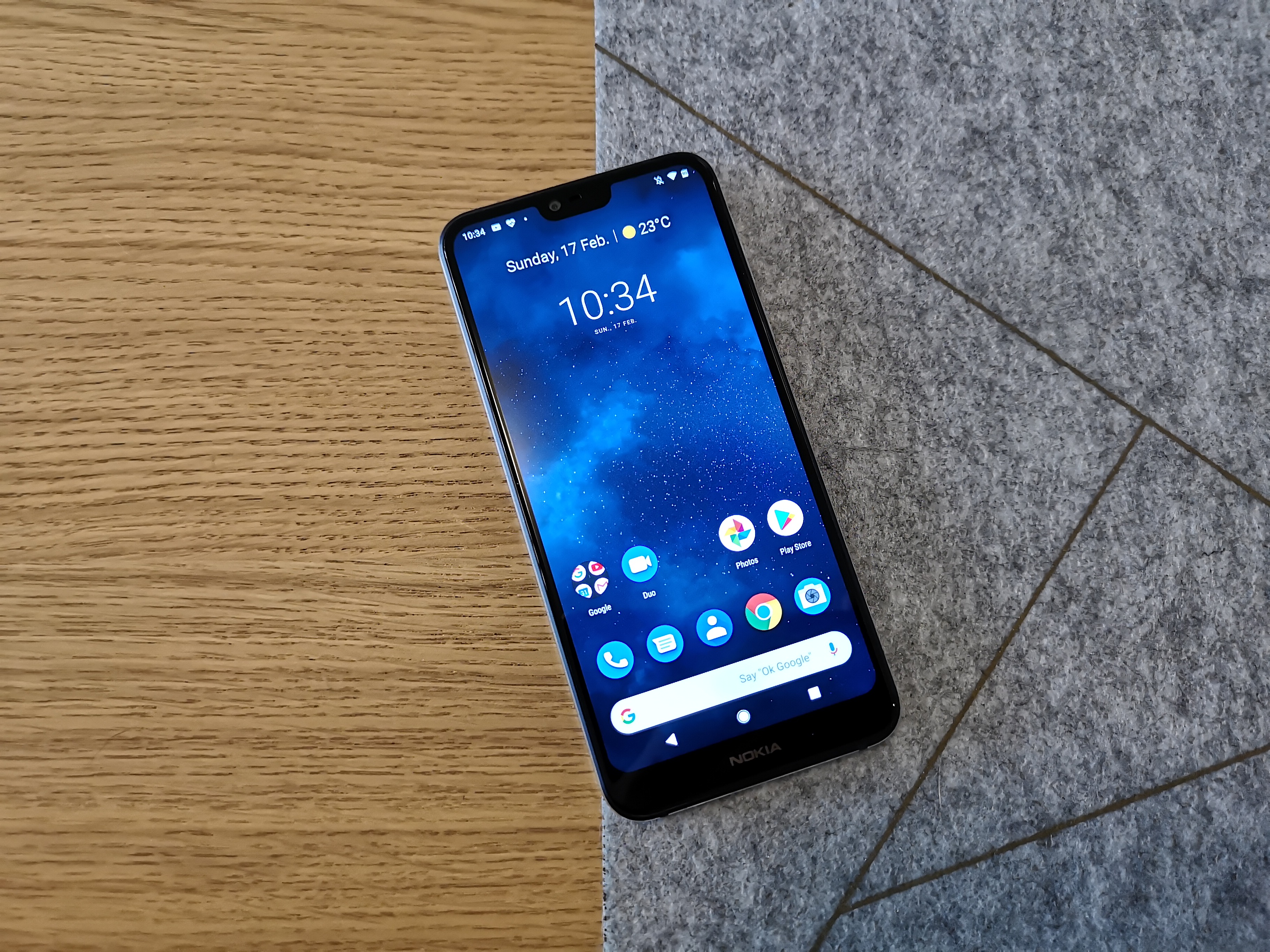HMD Global’s first couple of years as custodians of the Nokia mobile phone brand saw a surprising and welcome variety of phones released to the market at ambitious price points. Their solid product focus and the Nokia heritage reestablished the brand at retail and in consumer’s minds as a go-to option worthy of consideration in the midrange market.
The company’s recent iterations have seen the company try a number of new things, with varying degrees of success. The company extended their focus toward the high end with the Nokia 8, and then into the premium market with the Sirocco, with mixed results.
Perhaps smarting from that effort, HMD Global seems to want to reset their focus on the midrange now, aligning with the renewed assault on that market from a number of manufacturers. Now, though, we’re seeing attempts to differentiate devices from each other with cameras, display technology and more. It’s into this arena that the Nokia 7.1 arrives, firmly planting a stake in the ground with its modest $499 asking price.
The Nokia 7.1 is compact, with a diminutive screen size of just 5.8 inches. It’s following others into the full-screen-with-notch display space (although the phone does have a significant chin on its front, the screen does extend right up to the top) which means with its 18:9 aspect ratio it’s narrower and easier to hold in the hand.

That great in-hand feel is important, too – the 7.1 is a chunky little phone. While that sounds like an insult, it’s not meant to – it’s a solidly built device with a pleasant edge design that sits comfortably in your hand, and has a confident heft. It’s a midrange phone with premium design chops and it TOTALLY feels like a Nokia device.
There’s also a fingerprint reader on the back, which almost escaped being called out as a feature since it’s 2018 and we expect it, but there’s no face unlock feature so you’ll be reaching for that fingerprint reader a lot, or using pattern/pass unlock.
The only complaint I can level at the phone’s design, really, is that the camera bump on the back of the phone is extreme. I had to be careful what I kept in my pocket with the phone, lest its sharp edges brush up against the glass screen of another device.

Also missing? A 3.5mm headphone jack. (Well that’s embarrassing – there is in fact a 3.5mm headphone jack nestled into the black antenna line on the top of the device – apologies!)
What’s Inside?
Internally, the 7.1 packs a mashup of technology. Its processor is a Snapdragon 636 (now a year old) paired up with 3GB of RAM (which makes it ok for multitasking) and 32GB of onboard storage with a Micro SD slot. It’s kept running by a modest 3,060 mAh battery that charges quickly from the included USB C wall plug (it’s an A-to-C cable).
Google Pay is supported by the NFC chip, and the fingerprint reader is accurate.
Those specs won’t set the world alight, but there’s some extra things to consider.
This is the first Nokia device to include PureDisplay – a HDR-capable screen that’s certified by Dolby and can be used to play back HDR Netflix content. It works well, too – in general use the screen’s bold and bright and is even alright if you’re using in sunlight (but don’t go too crazy). HDR content playback is also quite a bold step in a handset retailing for $499, making me wonder if this is a test run of the technology for inclusion in future higher-spec devices.
Secondly, the dual rear camera setup on the 7.1 belies its midrange price point. The phone isn’t going to go toe-to-toe with the premium handsets from Google, Huawei or Samsung, but given that we’re looking at a $499 device here, the 12MP+5MP camera setup is well tuned and brings bokeh depth effects and a neat slow motion video mode. You could do a lot worse.
Running the show is one of the purest forms of Android available – Android One. It’s been updated to Android 9.0 (Pie), and it ensures that the phone is kept up to date with the latest security patches – all HMD Global has really customised here is the camera software.
It all looks great on paper. There are some unfortunate caveats though – we’ll get to them soon.

Camera
The Nokia 7.1 camera is surprisingly good for its price range. I took the phone out for a walk as the sun set on a Sydney evening and captured some lovely photos.
Ultimately, the tale is a familiar one – the camera does well when a scene is well lit, but it can struggle when the sun goes down. In the dark, when photographing illuminated environments, the results are decent if a bit noisy. You can improve them with a little post-processing in your favourite image editor, but that’s not really the point.
The camera software is pretty fresh, but has some puzzling features. The UI follows the current standard of offering a scrolling list of shooting modes near the shutter button, but doesn’t give you the ability to change the order of that list or hide particular modes. It also doesn’t really distinguish between modes and features, offering “square” as a mode rather than it just being an option for output resolution.
The Nokia camera app does feature some neat options though – it supports Motion Photos (as we saw debut around the time the Pixel 2 was launched last year, and has some now-standard face-detection functionality to apply stickers and in-shot lighting effects. I’ve made a point of checking out such stickers lately, and the results… well…
It’s not all roses (or daffodils). Weirdly, HDR is a switch in the settings menu for “Auto” HDR rather than it being than a toggle in the UI, despite there being LOTS of buttons in the camera UI supporting things like Motion Photos and even Google Lens. It’s not really obvious whether or not the feature was actually engaged – there’s no way to actually force HDR on, and that’s a no-no for photographers who want control over the camera features, especially one that can so drastically change the output.
There’s also a small issue of shutter lag, which might speak to some more general performance issues on the handset. Sometimes, despite looking at a fully loaded and ready to shoot camera UI, you’re just left wondering why it didn’t shoot when you told it to.
Speaking of manual controls, Pro mode takes a playful approach to the UI with controls for white balance, focus, ISO (up to 3,400), and shooting time (up to 4s).

If you drag the shutter button into the photo frame you can get all the controls on screen at once.

Most changes affected by manual controls aren’t reflected in the live preview, so you’ll need to keep an eye on your photos to see whether they’ve worked out or not.
Go Slow
Finally, a special note about slow motion video – it’s pretty neat. The phone’s stabilised slowmo is a fun feature to capture your surrounds as things move around. It’s not the super slow motion we’ve seen in premium phones for the last couple of years, but it doesn’t have to be.
All in all, the Nokia 7.1 delivers a surprisingly functional and useful camera for a phone that costs just $499. There’s definitely room for improvement, but this is punching well above its weight.
The elephant in the room
This all sounds pretty great, right? What was that about caveats earlier? Well, its a great shame to say it, but it all comes down to performance and the phone disappointed on that front. There’s a few places where it appears the phone just can’t handle the workload being thrown at it.
First of all, when setting up the phone I gave it a full install of my usual apps – basically, I restored my daily driver onto the device and inserted my SIM card. This left just 10GB of space available, which should be neither here nor there really (it’s 10GB!), but it may have caused the number of background services to increase.
The Australian version of the Nokia 7.1 is specced with 3GB of RAM, and this is I think a potentially fatal flaw on a modern Android phone.
More than I’d like, applications fell out of memory almost instantly when multitasking. Locking the phone and unlocking it would cause an app to relaunch – if the unlocking process didn’t cause the phone to seize up.
Swapping away from an app to answer a text message or take a photo was painful – firstly, there was a lot of waiting around for the next app to launch (leading me to think that the phones internal storage might be slow), and then swapping back would see the old app relaunch. There’s just not enough memory in the phone for it to be used the way I use a phone, and while I’m a demanding user who doesn’t like to wait around, I don’t think I ask THAT much of a phone.
Plugging the phone in to charge at night would lead to a general slowdown. The screen would lag well behind on touch input, and doing things as simple as pulling down the notification shade would take so long it would make me wonder whether I’d imagined actually doing it.
Weirdly though, these issues aren’t a constant bugbear. They’re intermittent, and I couldn’t find a pattern behind it.
Sometimes, the system flies as you navigate your way around it. Other times, it’s stuck in molasses. Sometimes it’s helped by a reboot, but that shouldn’t be your strategy for wringing performance out of the phone. The issues that appear when plugging the phone in to charge may also go away after a little while.
The whole thing feels like there’s some aggressive performance management going on behind the scenes. It all feels eerily like some of the complaints we’ve been hearing about memory management issues on other devices for a few months now.

Should you buy it?
The Nokia 7.1 is tough to recommend because of its performance issues that left a dark cloud over my enjoyment of it, but it’s still worthy of some consideration.
For $499 you’re going to be hard pressed to find a phone that delivers a pure, up to date Android operating system paired with a high quality camera. The 7.1 also has a really nice design that feels up to date and modern, and a great screen. It’s ended this review running Android 9.0 Pie with January security updates – how many other phones can you name that are this up to date.
If you’re anything like me in your phone use, the Nokia 7.1 going to frustrate you when the phone slows down for seemingly no reason. It’s left a bad impression that, as much as I enjoyed the feel of the phone and its camera, I couldn’t get past. When the time came to go back to my normal phone I went running … and didn’t look back.
Around the same price, you’ll find the Huawei Nova 3i along with several Oppo and Samsung phones (all of which however won’t be as up to date and secure as the Nokia with Android One). For a little extra outlay you might consider the Nokia 7 Plus.























It’s not for men having such smooth edges when taken across your facial hair it pulls them like 10 tweezers very annoying wen a habit
We bought one with the 64 GB version for $374.00 and we are extremely happy with the performance. We love an affordable phone which is neat and clean without the bloatware crap of many expensive phones. The to Pie was fast and easy and we know that we have the best and newest Android version at an affordable price.
Just returned this phone today as the volume down button was “stuck”. It wasn’t physically stuck, but there was something going on with it. You’d be using the touch screen and then suddenly the on screen volume control (Android 9) would show and the volume would slide to zero. Rebooting the phone would often put it in Safe Mode as it thought I was holding the volume button in. Factory reset did not help either. Took it back for a refund – which wasn’t straight forward. Apparently Harvey Norman have to ask Nokia (supplier) for permission first. I was going… Read more »
Slack behaviour on the part of Harvey Norman, they absolutely don’t need permission of the OEM to refund exchange etc. As the retailer, it’s their obligation under ACL (as you know). How pathetic.
My Nokka 6.1 has the same performance issues with apps relaunching etc. I found that turning off adaptive battery helped somewhat and but didn’t resolve the issue. I can’t help wonder if it’s an Android One issue overall? I’ll know more next week when I get the 8.1.
“Also missing? A 3.5mm headphone jack.” Actually, it has a headphone jack. Check on the top. I’ve had one for awhile now, after I needed to urgently replace a Moto. What I find most frustrating are phantom touches from the edge of the glass. The phone is an awkward, thin aspect ratio and, as you wrap your hand around it, either the bulky bit at the bottom of your thumb or the tip of your middle finger will trigger a touch event. Countless times I have scrolled up the app drawer only for it to stop as the mid-way as… Read more »
I don’t see why anyone would get this over the Moro G6 Plus, which is the same price with none of the performance issues
The Moto G6 Plus looks like it has all the specs I need from a phone – NFC, headphones, 64GB +SD, 4GB RAM. Took my Nokia 7 back for a refund today, perhaps I should consider this.
I’m using a Nokia 6.1 Plus with 4GB of RAM and 64GB of internal storage, and this too feels sluggish on numerous occasions. Sometimes the phone reboots itself for no apparent reason, whether it’s being used or idle.
I even disabled the evenwell apps pre-installed, but that hasn’t helped much. If things don’t improve, I won’t be buying another Nokia Android phone again.
It might be down to its Snapdragon 630 processor and 3GB RAM. The RAM chips may be slow too. The Nokia 7.1 has a Snapdragon 636 processor so performance is likely similar too.
You’re thinking of the Nokia 6.1, which has an SD630 and 3GB of RAM (here in Australia anyway). The 6.1 Plus has an SD636 and a notch.